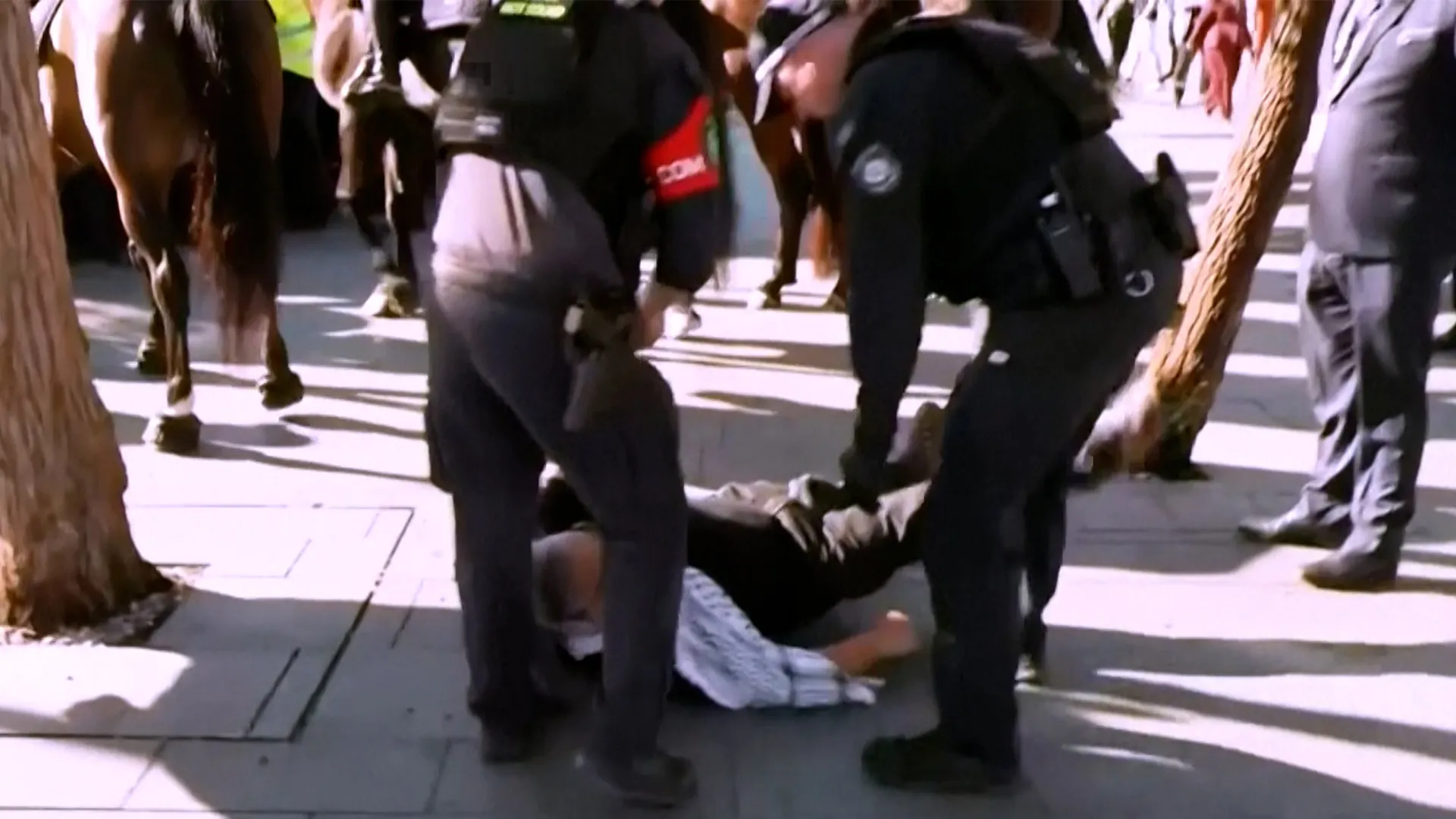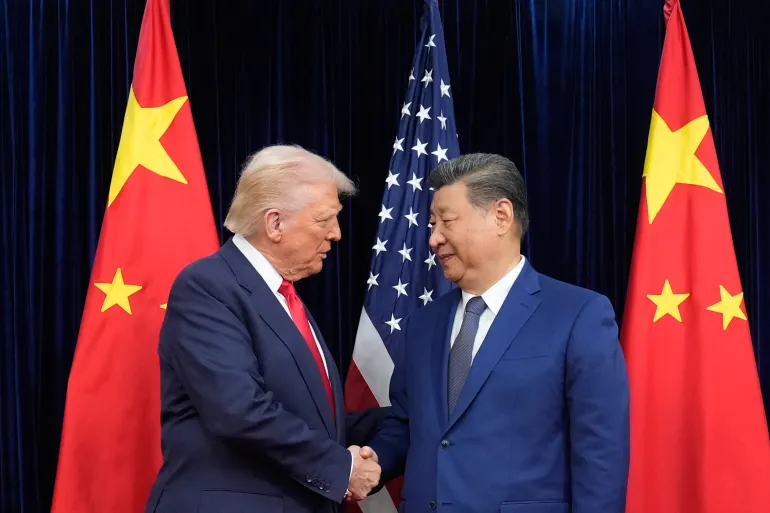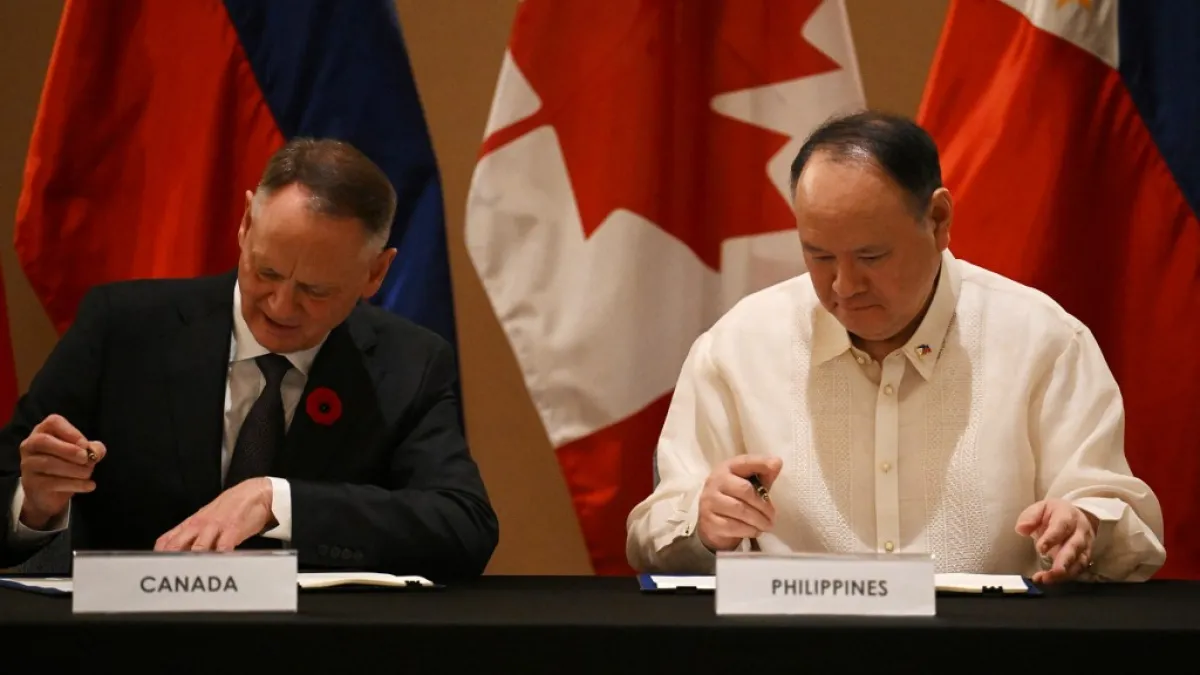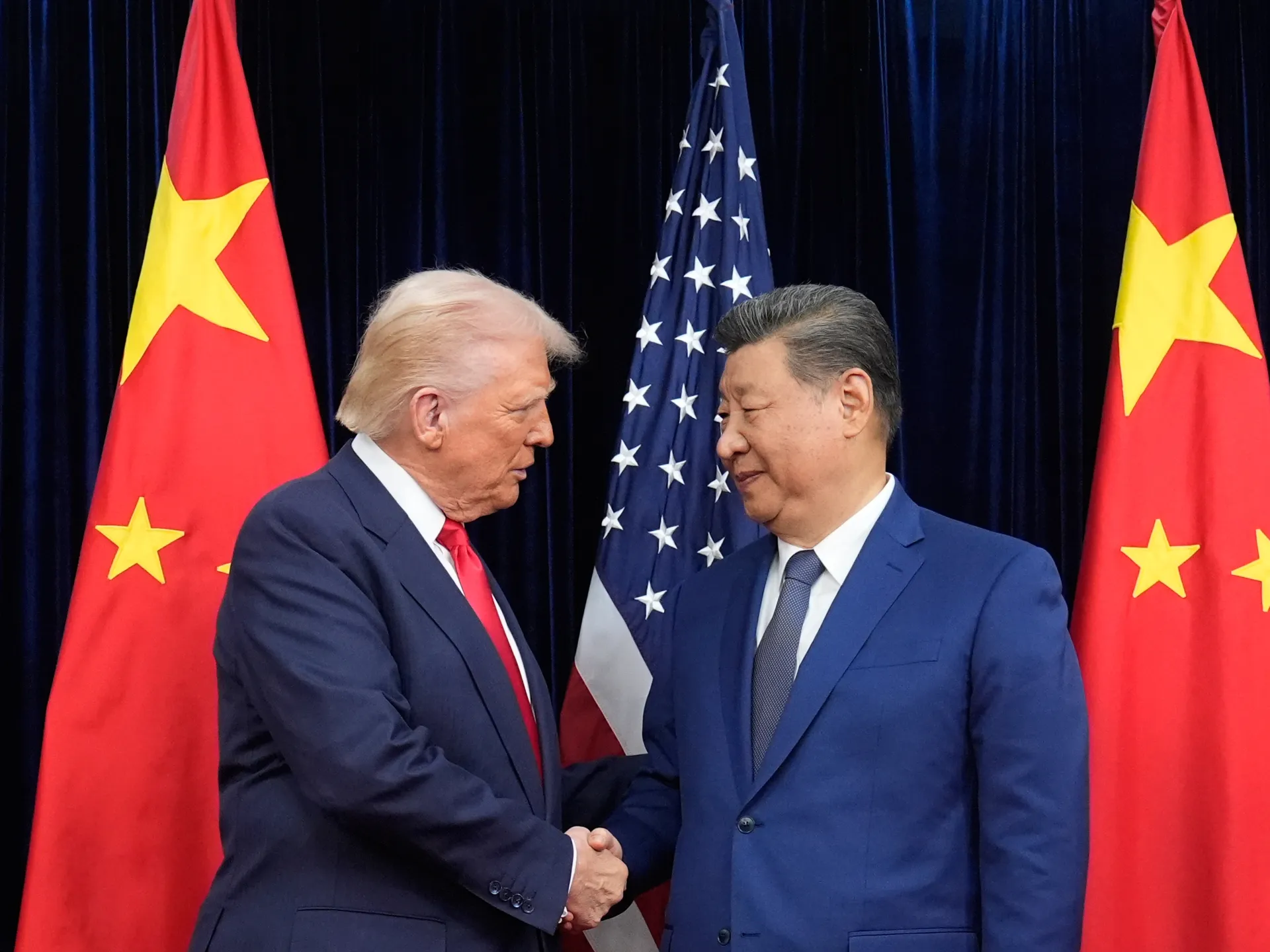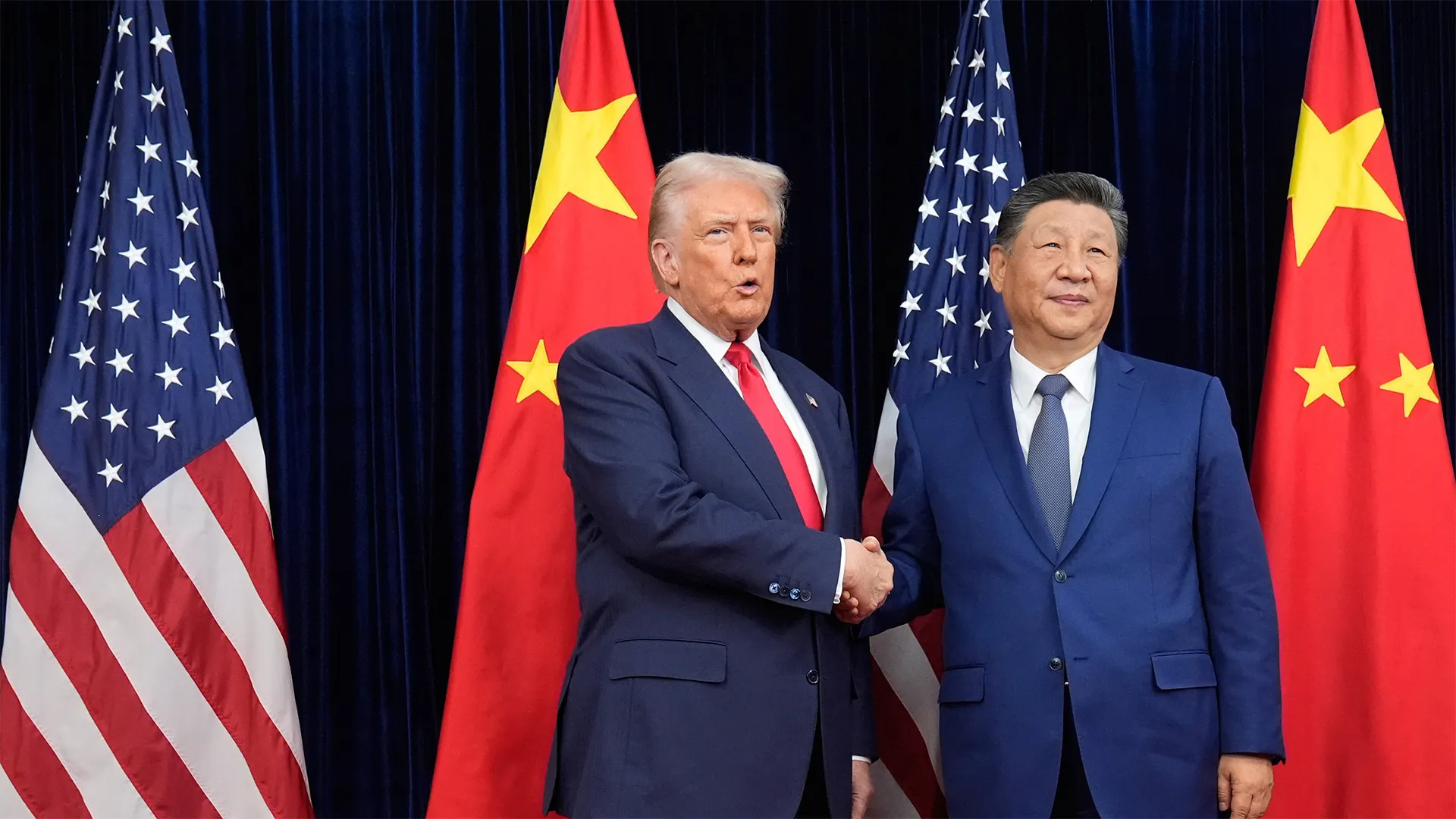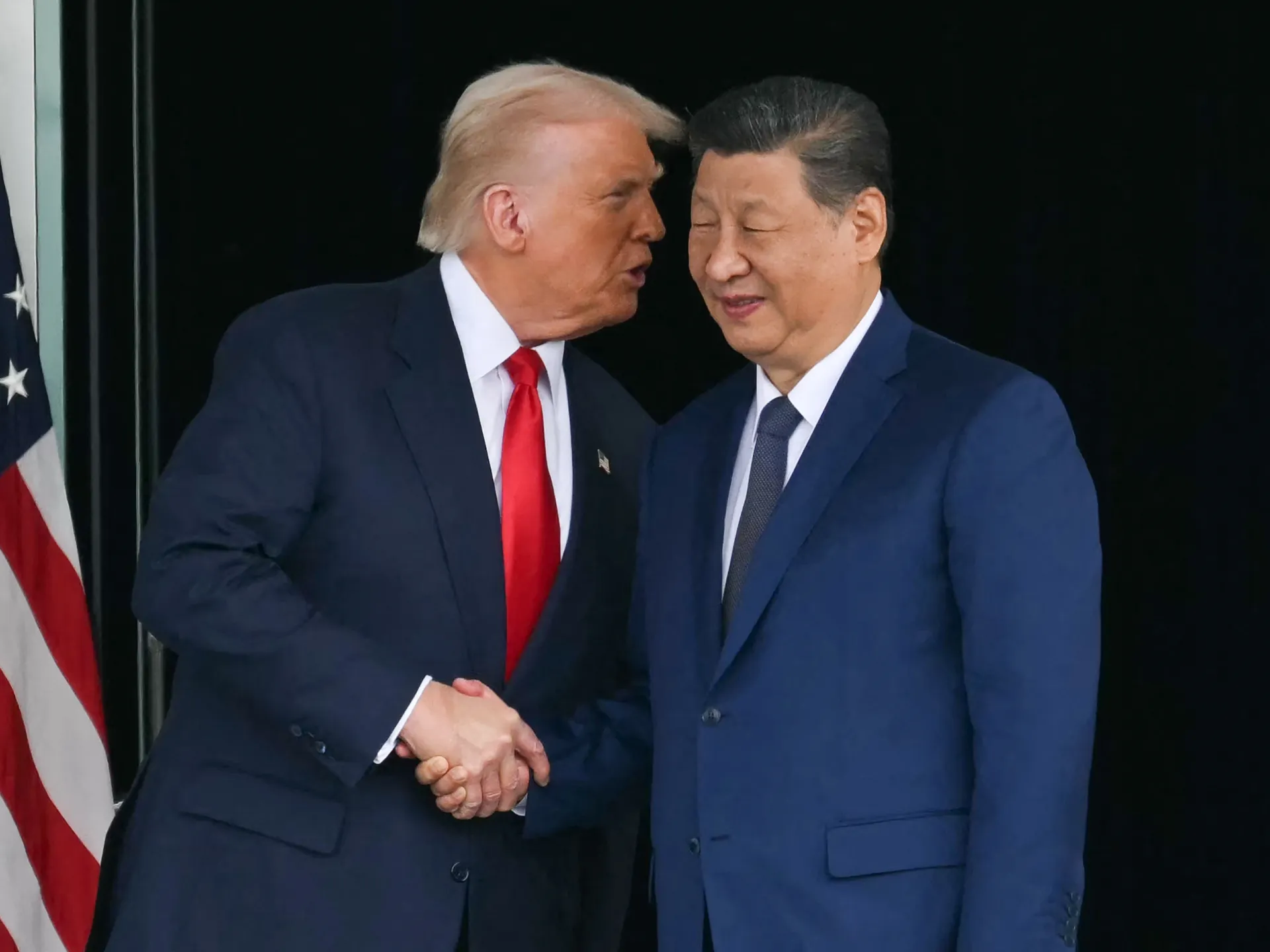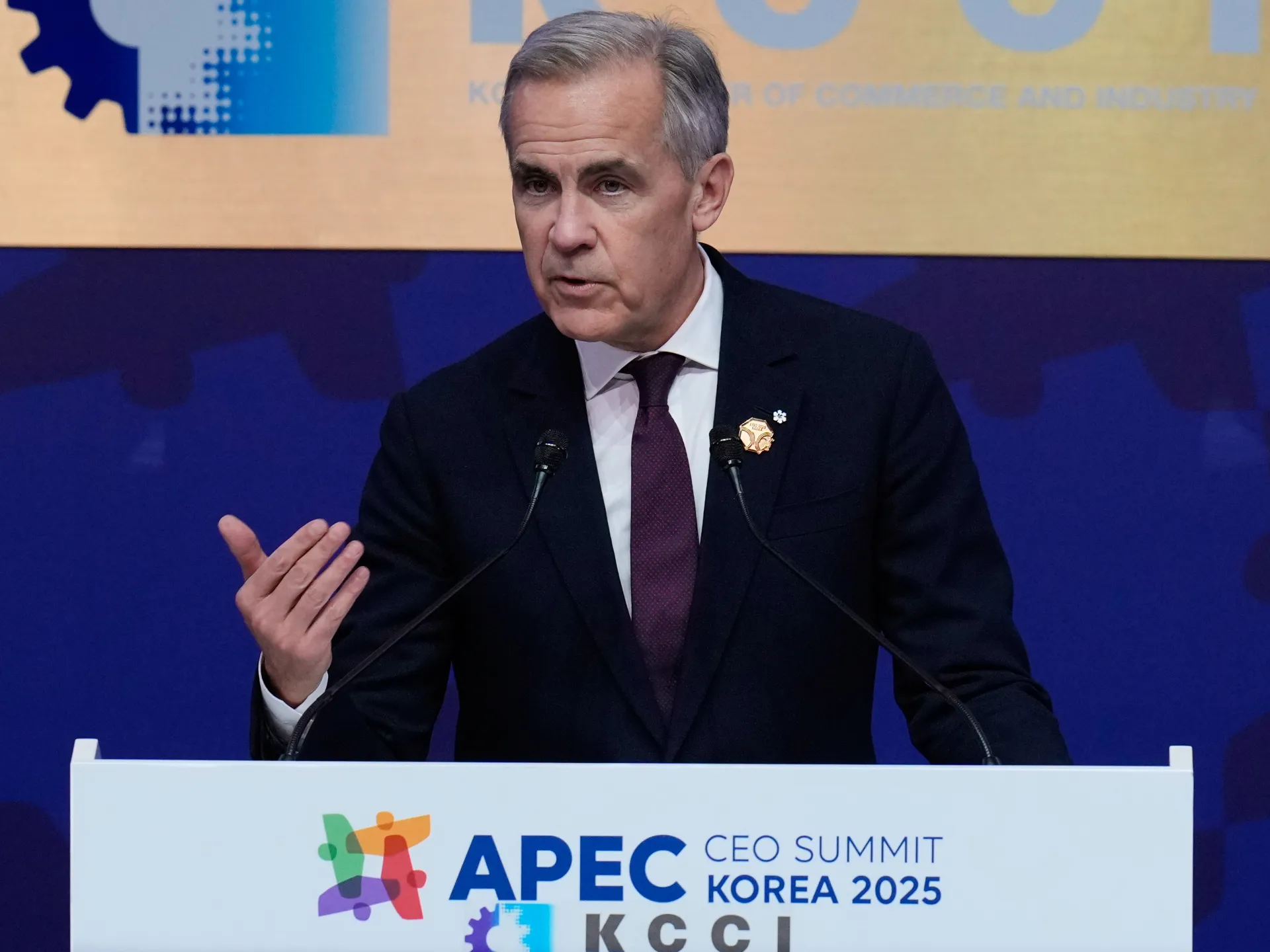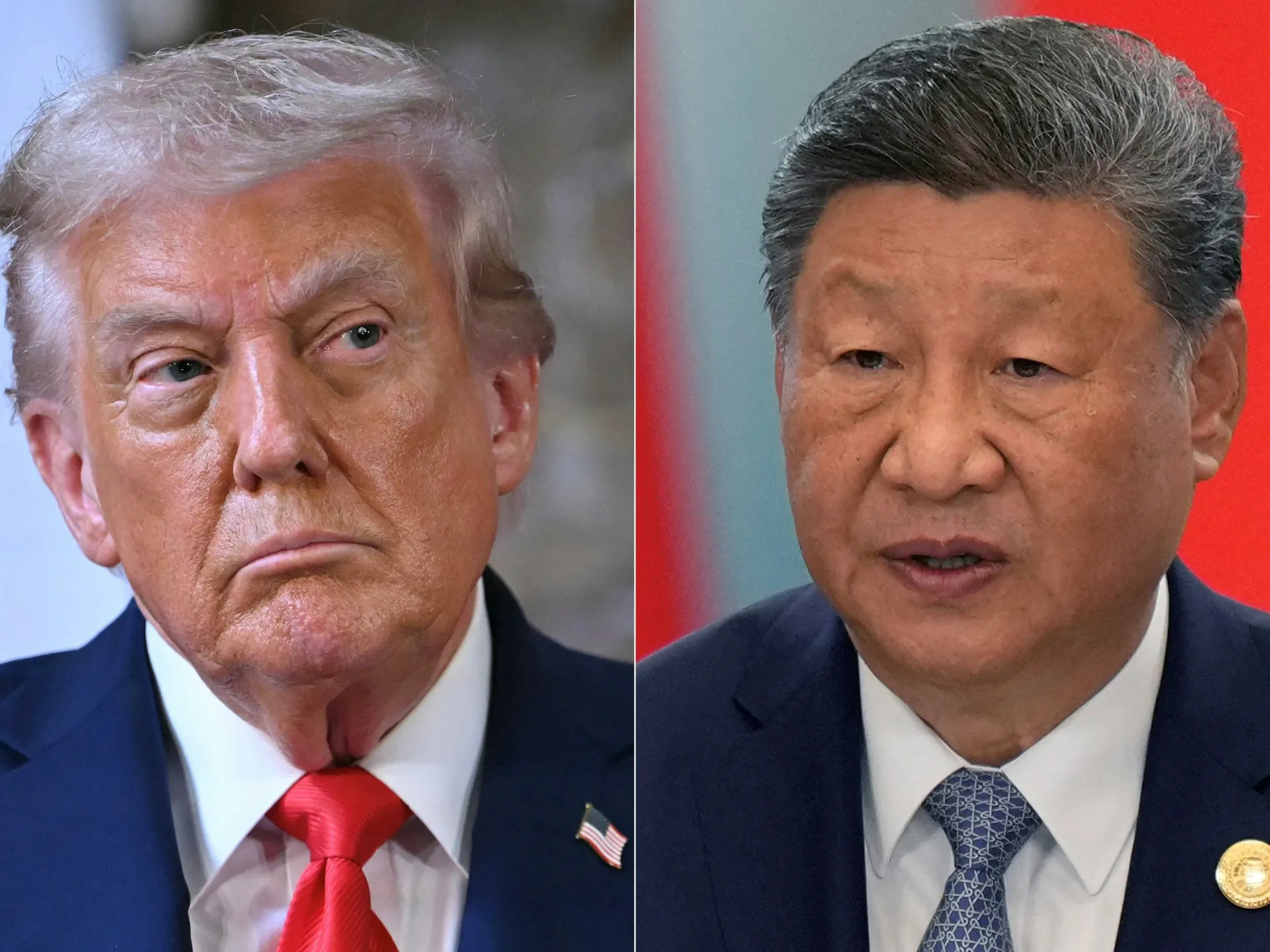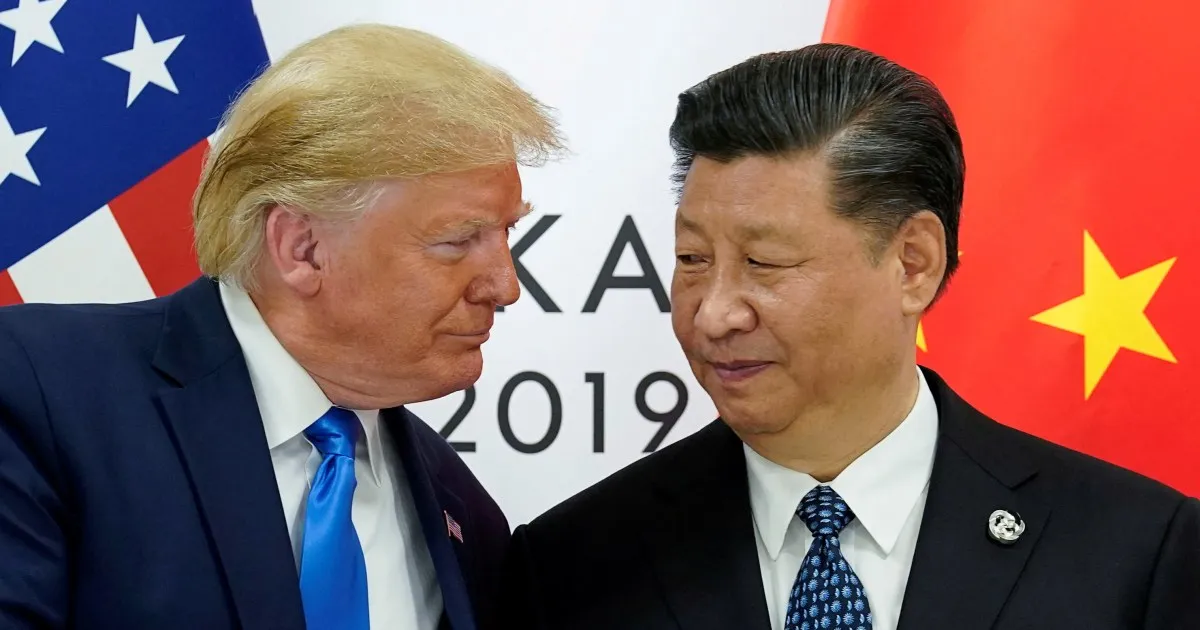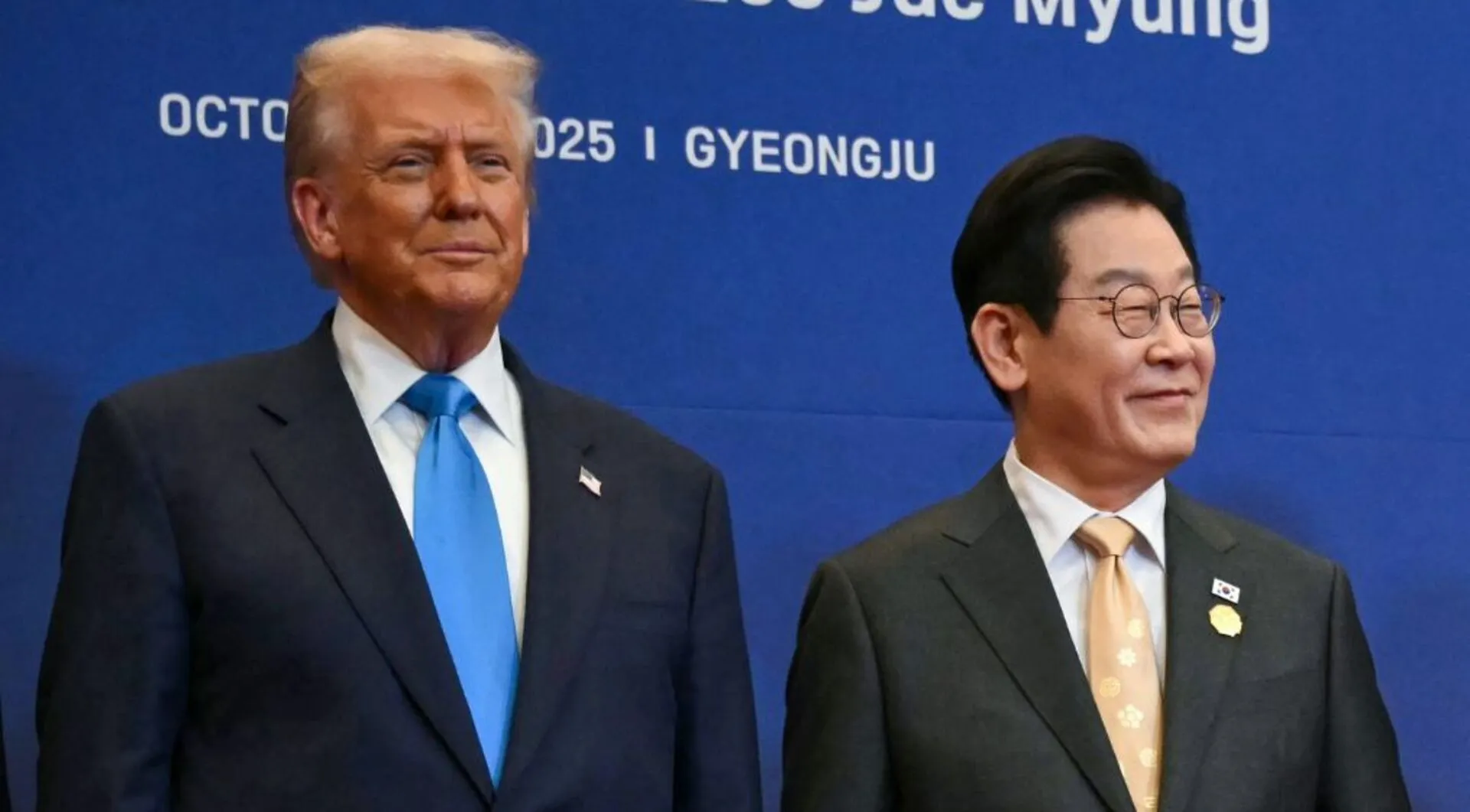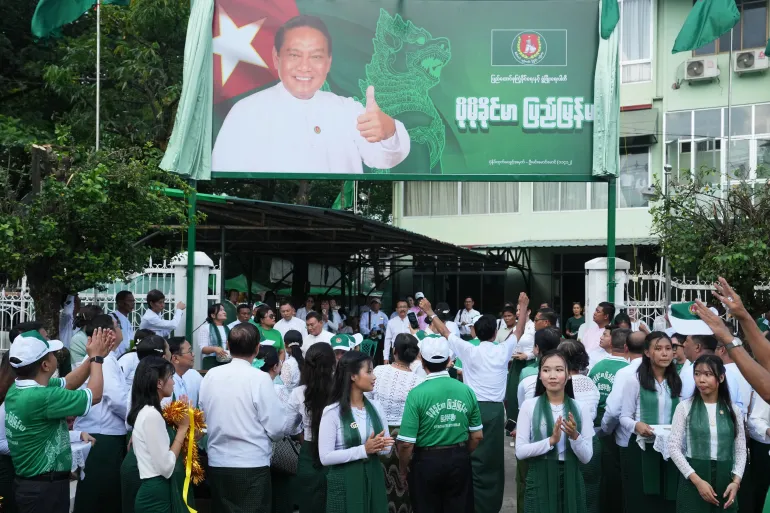United States President Donald Trump expects “a lot of problems” will be solved between Washington and Beijing when he meets China’s President Xi Jinping in South Korea for a high-stakes meeting on Thursday, amid growing trade tensions between the two.
Relations between the two world powers have been strained in recent years, with Washington and Beijing imposing tit-for-tat trade tariffs topping 100 percent against each other this year, the US restricting its exports of semiconductors vital for artificial intelligence (AI) development and Beijing restricting exports of critical rare-earth metals which are vital for the defence industry and also the development of AI, among other issues.
Recommended Stories
list of 3 itemsend of list
Officials from Washington and Beijing have been locked in trade talks since August to de-escalate trade tensions, and they also came up with a framework for a trade deal during meetings in Malaysia over the weekend.
On the sidelines of the Asia-Pacific Economic Cooperation (APEC) summit in Gyeongju, South Korea, on Wednesday, Trump said an expected trade deal between China and the US would be good for both countries and “something very exciting for everybody”.
But only a meeting between Trump and Xi can confirm if a trade deal is really in the making.
Expectations for the agreement are modest, with analysts expecting the two world powers to continue to clash over their myriad differences long-term.
When are the two leaders meeting?
Trump is scheduled to meet Xi on Thursday in the port city of Busan in southeastern South Korea. The meeting is expected to start at 11am local time (01:00 GMT).
It will be the first time the leaders have met in person since Trump returned to the White House in January.
The US president last met Xi in 2019, during Trump’s first term, on the sidelines of the Group of 20 (G20) summit in Osaka, Japan.
“I think we’re going to have a great meeting with President Xi of China, and a lot of problems are going to be solved,” Trump told journalists on Wednesday on Air Force One while en route to South Korea.
On Wednesday, China’s Ministry of Foreign Affairs confirmed the meeting between Xi and Trump in a statement and said the leaders “will exchange views on bilateral relations and issues of mutual interest”.
What will Trump and Xi talk about?
Discussions are likely to cover:
- Trade tariffs
- Trafficking of fentanyl, a drug responsible for tens of thousands of deaths in the US each year
- China’s export controls on critical rare-earth metals and its purchase of US soya beans
- US export controls on semiconductors
- Geopolitical and security issues, particularly Russia’s war in Ukraine and Washington’s position on Taiwan
- Port fees on Chinese ships docking in US ports
- Finalising a deal to buy TikTok, the social media platform, from its Chinese owners
Alejandro Reyes, adjunct professor at the Department of Politics and Public Administration at the University of Hong Kong, told Al Jazeera that at this meeting, both sides will want to steady an uneasy rivalry – but for different reasons.
“For Washington, the goal is to show that its tough line on China has delivered results. The Trump team is walking into this summit after signing trade pacts with Malaysia, Cambodia and Japan that link market access directly to national security cooperation. These deals require America’s partners to align with US export controls and supply-chain rules – essentially making ‘economic security’ a shared obligation,” he said.
“For Beijing, the priority is to project calm and endurance. The meeting comes just after the fourth plenum, which reaffirmed Chinese leader Xi Jinping’s authority and set the direction for the next five-year plan. China’s message is that it has weathered Western pressure and is back to focusing on growth and domestic stability,” he added.
But discussions on disputes over trade tariffs, critical rare-earth metals, AI technology and geopolitical strategies, the issues that most define the current relationship between the US and China, according to Reyes, are not going to be easy to resolve.
“The mistrust is structural now – it’s built into how both countries think about power and security,” he said.
What are the sticking points?
Fentanyl
A key issue for the Trump administration is stopping the illegal flow of drugs, particularly fentanyl – a powerful synthetic opiate which is 50 times more potent than heroin – from China to the US. In February, Trump slapped a 20 percent trade tariff on all imports from China, citing Beijing’s lack of effort in curbing the flow of the drug into the US.
In a media briefing note sent to Al Jazeera by the German Marshall Fund of the United States, Bonnie Glaser, managing director of GMF’s Indo-Pacific programme, said the fentanyl trade has been “a really contentious issue between the US and China”.
“From what I have heard, a criminal money-laundering cooperation supports the fentanyl trade, and this is where China is willing to cooperate, in a way where it will have minimum negative impact on their domestic situation,” she said at a briefing held in Washington, DC, on Tuesday.
Late on Tuesday, The Wall Street Journal reported that during Thursday’s meeting, “China is expected to commit to more controls on the export of so-called precursor chemicals used to make fentanyl.” The newspaper added that if this agreement is reached, Trump would reduce the tariffs imposed because of fentanyl by as much as 10 percent.
Trade tariffs
Following the fentanyl-related tariffs, in March, China imposed a 15 percent tariff on a range of US farm exports in retaliation, triggering a tit-for-tat tariff war.
In April, Trump raised tariffs on Chinese imports to 145 percent, prompting China to hit back with 125 percent tariffs of its own.
Washington and Beijing later cut tariffs to 30 percent and 10 percent, respectively, in May, and agreed to a 90-day truce in August for trade talks. The truce has been extended twice, but despite repeated talks, a trade agreement has not been reached.
Rare-earth metals and soya beans
China has restricted exports of 12 critical rare-earth metals this year, as well as of the machinery needed to refine these metals, citing security reasons. Beijing also said its restrictions were in response to US restrictions on the Chinese maritime, logistics and shipbuilding industries.
The first seven metals to be restricted were announced in April, while the remaining five were announced on October 10. These metals are crucial for the defence industry and for developing AI technology.
In October, Trump responded by threatening to impose 100 percent tariffs on China from November 1, citing Beijing’s strict export controls on critical rare earths as the reason for the tariffs.
Trump added that the US would also impose export controls on “any and all critical software”.
Reyes noted that while the US wants guaranteed access to rare earths and battery materials, it signed a new agreement with Japan and trade clauses with Malaysia this week, which aim to reduce the US dependence on China for these. “Beijing sees this as an effort to contain its influence,” he said.
Meanwhile, US Secretary of the Treasury Scott Bessent told many US media outlets this week that he expected China to defer its restrictions on rare earths and that Trump’s 100 percent tariff threat was “effectively off the table”.
Bessent added that the Chinese side would agree to increase purchases of US-grown soya beans.
Dylan Loh, associate professor in public policy and global affairs at Nanyang Technological University, said he anticipates some positive movement on solving these trade disputes but does not believe the fundamental economic tension between the US and China will be resolved at the meeting.
“The competition and mistrust go beyond simply economics,” he told Al Jazeera. “But the problems can be managed and must be managed well. It requires political capital and the ability to move beyond zero-sum thinking.”
Technology and TikTok
In September, Trump signed an executive order to transfer TikTok’s US assets to US investors, citing national security reasons. On Sunday, Bessent told US broadcaster CBS that the US and China had “reached a final deal on TikTok”, which will be finalised at the Trump-Xi meeting.
But, Reyes said, “the deal cools one dispute but doesn’t end the fight over chips, AI and digital control”.
In October, Washington blacklisted hundreds of Chinese tech firms, claiming they posed a risk to national security. The US has also restricted companies such as Nvidia from exporting advanced chips, important to manufacture key equipment used for the development of AI, to China, claiming that Beijing would use it to advance its global power.
Beijing has been irked by Washington’s restrictions and has launched antitrust investigations into Nvidia and Qualcomm, and has also increased its export controls on rare-earth elements.
Speaking to reporters on board Air Force One en route to South Korea on Wednesday, Trump said he might speak to Xi about Nvidia chips.
“I think we may be talking about that with President Xi,” Trump said.
Geopolitical Issues
According to analysts, Trump is eager to use this meeting with Xi to discuss ways to end Russia’s war in Ukraine.
Beijing, a close ally of Moscow, has said a prolonged war in Ukraine “serves no one’s interest”. But, in July, according to a report by The South China Morning Post, Chinese Foreign Minister Wang Yi told the European Union that it can’t afford to have Russia lose the war in Ukraine since the US would then turn its attention to China.
Trump has threatened to slap sanctions and tariffs on countries that buy Moscow’s crude oil in efforts to end the war. It has already imposed an additional 25 percent tariff – bringing the total to 50 percent – on India as a punishment for purchasing Russian oil.
But the US has not yet taken this step with China, which imports about 1.4 million barrels of Russian oil per day by sea.
According to a Reuters report, however, after the US sanctioned two of Moscow’s largest oil companies, Rosneft and Lukoil, in October, Chinese national oil companies like PetroChina and Sinopec have said they will refrain from importing seaborne Russian oil for the short term.
“Trump wants a ceasefire and a peace deal in Ukraine. Putin has been unwilling to play ball, and Trump, I think, intends to raise this with Xi Jinping, possibly ask him if he can reach out to Putin and encourage him to come to the negotiating table,” Glaser said.
“We know so far, Xi Jinping has been very, very cautious about getting involved. I think he will be reluctant to pressure Putin to do,” she added.
Besides Ukraine, Beijing will be eager to discuss the US position on Taiwan, according to Glaser.
“Xi Jinping will raise concerns about what Beijing views as the pro-independence policies of Taiwan’s President Lai Ching-te, and I think he will want clarification of the US stance and may well press Trump to say that the US opposes Taiwan independence and supports China’s unification,” she said.
“The bottom line is that Trump is not likely to abandon Taiwan because doing so could lead to a PRC [People’s Republic of China] decision to use force, and Trump wants to take credit for ending wars, not starting them,” Glaser added.
Trump, however, told journalists on board Air Force One on Wednesday that he was “not sure” he would discuss Taiwan.
How strong are their negotiating positions?
The balance of power in the respective negotiating positions of China and the US has shifted in the recent past.
Former US President Joe Biden restricted exports of US semiconductors, which are crucial for the development of AI, much to China’s annoyance. Then, early this year, Trump compounded this with 145 percent tariffs on Chinese goods.
China retaliated with 125 percent tariffs on US goods, escalating a trade war, until the two sides agreed in May to pause tariffs to allow for trade talks.
But that was not before China placed export restrictions on seven rare-earth metals in April. In October, China restricted exports of five more rare-earth metals, and Trump threatened 100 percent tariffs again in retaliation.
This week, seeking to diversify trade and its supply chains, China strengthened a trade deal with the Association of Southeast Asian Nations (ASEAN). But the US also drew up new trade agreements with Japan, Malaysia and Cambodia. On Wednesday, South Korea announced that it too had reached a trade agreement with the US, and was lowering tariffs on imported US goods.
According to Loh, it is unclear who has the upper hand right now between the US and China.
“While the signing of the FTA [with ASEAN] has certainly enhanced China’s position and influence and is indeed quite significant for ASEAN and China, it does not necessarily have a direct bearing on US-China itself,” Loh said.
“US retains considerable political and economic influence in this part of the world still, as evinced by Trump’s trip here,” he added.
According to Reyes, each side has different kinds of leverage.
“The United States has built a new network of allies who have literally signed on to Washington’s playbook,” he said, referring to the deal Washington signed with Malaysia, which obliges Kuala Lumpur to match US trade restrictions. Malaysia has clarified that this deal would only apply to matters of shared concern.
But Reyes said such a deal “gives Trump’s team political and legal momentum going into the China meeting”.
“China, though, has the economic stamina. It still anchors global manufacturing, dominates critical-mineral processing, and has proven that tariffs couldn’t break its model. China used the trade war to build muscles, resistance and resilience – it learned to do everything faster, cheaper and at scale,” he said.
“So the US has the ‘louder’ hand; China has the steadier one. Washington can escalate, but Beijing can outlast,” Reyes added.
So what is likely to come out of these talks?
The stakes are high with Trump announcing that he anticipates a “great” meeting. But expectations of any “great” outcome are low.
Reyes said he expects a truce in their strained ties with photo opportunities rather than any grand bargain.
“Expect both sides to announce small wins: a delay on tariffs, a joint statement on trade stability, maybe a working group on critical minerals cooperation,” he said.
“This summit won’t end the rivalry – it simply marks a new phase: the US building alliances through treaties, and China doing much the same, while consolidating power through endurance building. This meeting isn’t about ending the rivalry – it’s about learning to live with it,” he said.




